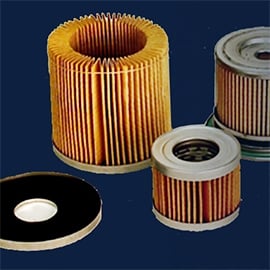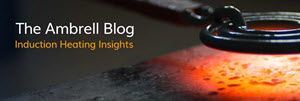How Does Induction Curing Work?
Induction heating provides a better solution for adhesive curing than air curing, hot fan curing or curing in large ovens which must be run continuously. Induction is used to heat the metallic material on which the curing adhesive has been applied
Induction generates an electromagnetic field in a work coil that induces currents in the conductive material of a workpiece placed within or near the coil. Friction from these currents elevates the temperature of the workpieces to be heated.
Benefits of induction curing
-
Meets tight production tolerances with precise localized heat to small areas creating pinpoint accuracy
-
Increases production rates with faster heating cycles
-
Reduces defect rates with repeatable, reliable heat
-
Eliminates variability from operator-to-operator, shift-to-shift
-
Maintains metallurgical characteristics of the individual metals

Select from our collection of curing notes, taken from years supporting our customers. Read how we helped to solve their process heating challenges.
 Curing Oil Filters for Agricultural Equipment
Curing Oil Filters for Agricultural Equipment
To heat steel parts for a curing application; the end-product was an oil filter for agricultural equipment.
 Curing coatings; steel tube, aluminum block
Curing coatings; steel tube, aluminum block
The client's oven had a heating time of 20 minutes, so the time savings from a 90-second cycle are considerable. Additionally, induction is a repeatable process, unlike an oven and the induction system takes up less floor space than an oven.
 Curing Epoxy On A Laser Diode Assembly
Curing Epoxy On A Laser Diode Assembly
To heat epoxy on a laser diode assembly to 250°F within 5 seconds for a curing application
 Curing plastisol adhesive; ends of filter assembly
Curing plastisol adhesive; ends of filter assembly
Induction heating provides improved distribution of heat, much faster cure time than heat plates previously used, much faster production rate and hands-free heating that involves no operator skill for manufacturing
 Curing a coating; both sides aluminum piston
Curing a coating; both sides aluminum piston
A three turn channel coil 19 (48.26cm) long is used to anneal 4 pistons running though the coil with a distance of 6 (15.24cm) between centers.
 Curing epoxy on aluminum copier roller assembly
Curing epoxy on aluminum copier roller assembly
A four turn helical pancake coil is used to heat the end of the copier roller assembly. The assembly is heated 90 seconds to cure the adhesive.
 Curing plastisol adhesive on an aluminum filter assembly
Curing plastisol adhesive on an aluminum filter assembly
A four turn helical coil is used to cure the plastisol adhesive. One filter end cap is filled with adhesive, attached to the filter and heated 90 seconds to cure the adhesive.
 Curing ink on aluminum bottle caps
Curing ink on aluminum bottle caps
A double channel coil is used for the ink drying application. Fifteen bottle caps are placed inside the coil and power is applied for 3 seconds to dry the ink.
Automotive manufacturers are constantly searching for cost-effective production technologies.
A special steel tube and coil combination is used to build an induction heating oven to cure the fiber on a continuous basis. The ceramic fiber travels in an alumina tube inside a hot steel tube
Induction heating provides minimized coating defects, repeatable results and faster production times
 Curing the Inside Liner of Baby Food Bottle Tops
Curing the Inside Liner of Baby Food Bottle Tops
A three turn oval pancake coil is used to cure the inside liner of a baby food bottle cap. The bottle cap travels through the coil at 25 per second to cure 500 caps per minute.
 Bonding Rear View Mirror Brackets to Windshield Glass
Bonding Rear View Mirror Brackets to Windshield Glass
A unique four-over-four double wound pancake coil is used for the bonding application.
 Curing Adhesive on Steel Motor Shaft for Bonding
Curing Adhesive on Steel Motor Shaft for Bonding
A complex two coil system, shield and stud systems used to provide proper axial alignments of the shaft & coil while allowing the fixture to be open for removal of the shaft.
The Ambrell 20kW output solid state induction power supply along with a unique 30 inch long multi turn helical coil was found to produce the following results.
Popular Curing Note
Popular Curing Video
More Induction Curing Resources
Four Ways To Contact Ambrell for Support
AMBRELL CORPORATION
1655 Lyell Avenue
Rochester, NY 14606
United States
F: +1 585 889 4030
AMBRELL B.V.
Holtersweg 1
7556 BS Hengelo
The Netherlands
AMBRELL Ltd.
Unit 6, Space Business Centre
Tewkesbury Road
Cheltenham, GLOS, GL51 9FL
United Kingdom
F: +31 546 788 154


 Curing Alumium Car Molding
Curing Alumium Car Molding Curing Ceramic Fiber
Curing Ceramic Fiber Curing Speaker Cone Epoxy
Curing Speaker Cone Epoxy Curing Measuring Tape Paint
Curing Measuring Tape Paint





